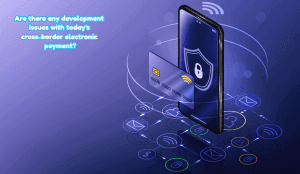Are there any development issues with today’s cross-border electronic payment?
- by leormotrmo
- January 3, 2022
As we all know, cross-border payments using traditional methods require payment of fees and even face obstacles and delays. Every year, users spend billions of dollars to transfer money in the form of personal remittances. Multinational companies can choose to bear these foreign exchange costs, or pass the costs on to customers. All parties to the transaction must wait days or weeks before completing the transfer transaction. Most importantly, the possibility of cross-border remittances through traditional Chinese teaching methods is full of various restrictions.
part of the problem is the "non-interoperability" of the transfer system. online payment gateway providers,In the absence of a blockchain technology that can support it, the resistance to sending money to different corners of the world has a considerable impact. For decades, the entire management system has been woven together in a disorderly manner to achieve financial interoperability between the development of financial service institutions, agency banks, and remittance operators in the enterprise value chain. In the process of connecting these information decentralized financial management systems (especially those markets with imperfect financial development service systems), especially when students face our markets where local currencies do not participate in global online transactions, friction is inevitable-this has led to the Every teaching link in the financial industry chain has experienced long delays and high transaction costs.
Just last year, the G20 made the improvement of cross-border payments a priority, on the grounds that a faster, cheaper, and more transparent system will bring benefits to global citizens and economies, and more and more global policy makers are aware of the block Chain technology can solve the problem of outdated financial infrastructure.
But the solution is not only here, but here. Nowadays, blockchain technology is fulfilling its promise through seamless cross-border payment.
Global public network
Blockchain technology shows that we can connect financial infrastructure. Therefore, no matter where you are, subject to the limitations of financial systems and asset forms, blockchain technology can help you achieve asset interoperability.
Stellar is a global public blockchain project that aims to achieve interoperability and further promote financial accessibility and system inclusiveness. Stellar Lumens can have more than 20 anchor points in the global economy. These anchor points are part of the global Internet financial management system.These anchors are regulated financial management institutions, currency development service social enterprises or financial information technology companies, which issue 1:1 legal support tokens (also known as stable coins), or/and provide legal currency price theory Adjust its own value tokens on the basis. Stellar's goal is to reform and open the Chinese market for new remittance and payment development methods, such as the financial and economic exchanges between Europe and Nigeria, which is the largest remittance service market in sub-Saharan Africa.
related articles:
